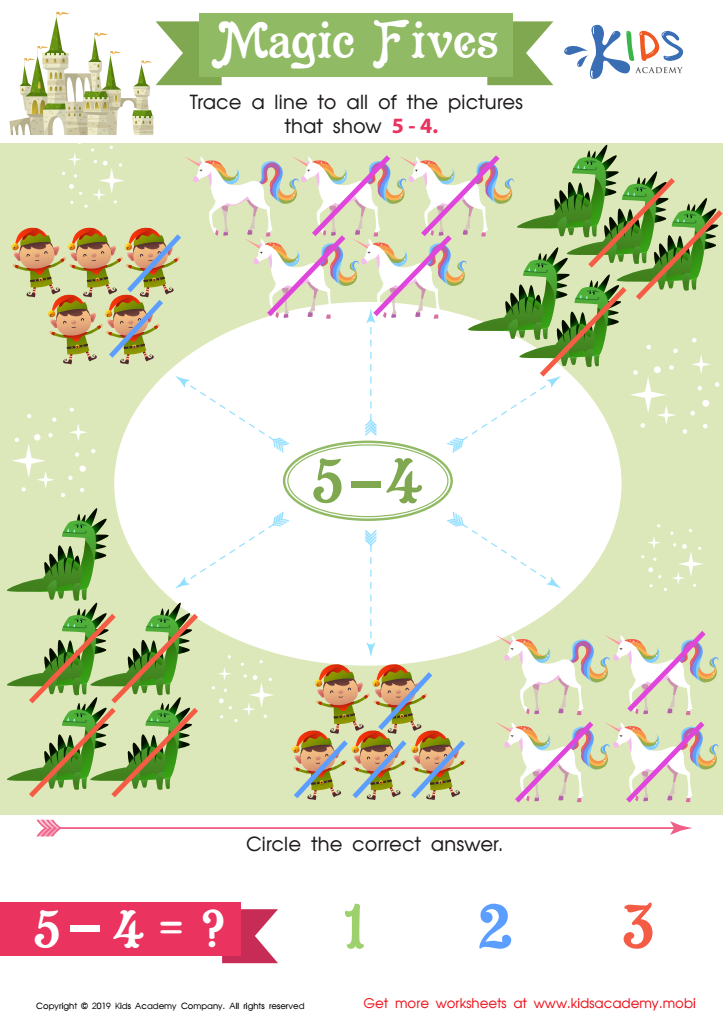Mathematical reasoning Normal Addition & Subtraction Worksheets for Ages 3-6
9 filtered results
-
From - To
Welcome to our collection of Mathematical Reasoning Worksheets focused on Normal Addition and Subtraction for children aged 3-6! Designed to engage young learners, these worksheets promote essential math skills through fun and interactive activities. With activities that encourage critical thinking and problem-solving, your little ones will develop a strong foundation in basic addition and subtraction. Each worksheet is crafted to make learning enjoyable, helping children grasp essential mathematical concepts while fostering their reasoning abilities. Ideal for both home and classroom use, our printable resources provide a fantastic way for early learners to explore mathematics in an engaging and supportive environment. Start their journey today!


Tricky Problems Worksheet: Part 1


7 Continents and 7 Seas Worksheet


What's the Rule Worksheet


Magic Fives Worksheet


Find the Rule Worksheet


Making 17 with the Weather Worksheet


Count Back to Subtract Substraction Worksheet


What Makes 13 Worksheet


Addition or Subtraction? Worksheet
Parents and teachers should prioritize mathematical reasoning in normal addition and subtraction for children aged 3 to 6 because it lays the foundation for critical thinking and problem-solving skills. At this early stage, children begin to understand numbers and develop cognitive abilities vital for future mathematical learning.
Fostering an understanding of addition and subtraction through everyday activities—like counting toys, sharing snacks, or playing number games—enhances children's engagement and makes learning enjoyable. This playful approach not only makes math concepts more relatable but also boosts children's confidence as they see their capabilities grow.
Implementing mathematical reasoning helps children to develop logical thinking and the ability to approach problems systematically. As they tackle basic arithmetic, they also build perseverance when faced with challenges, learning that mistakes can be valuable learning opportunities.
Additionally, strong mathematical foundations are linked to academic success across all subjects, as many disciplines require quantitative reasoning. Early engagement with these concepts can also reduce math anxiety later on, encouraging a positive attitude towards learning.
In summary, establishing a solid groundwork in addition and subtraction can have lasting academic and personal benefits for children, inspiring lifelong learners who approach challenges with curiosity and resilience.
 Assign to My Students
Assign to My Students

















